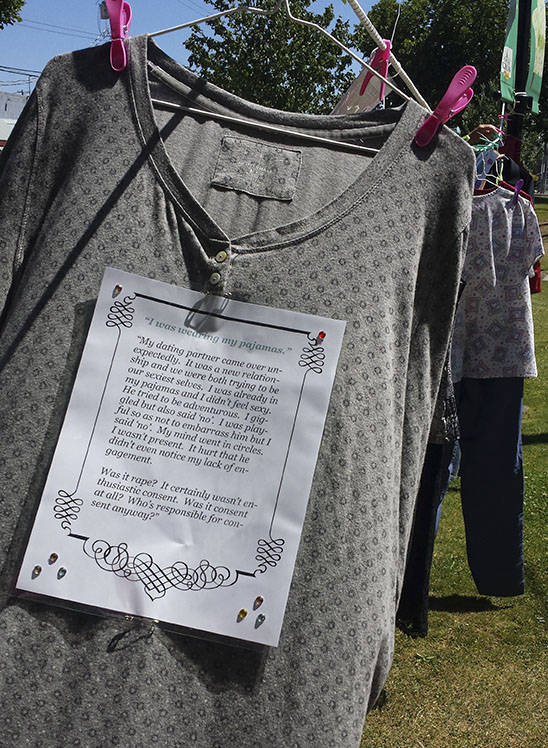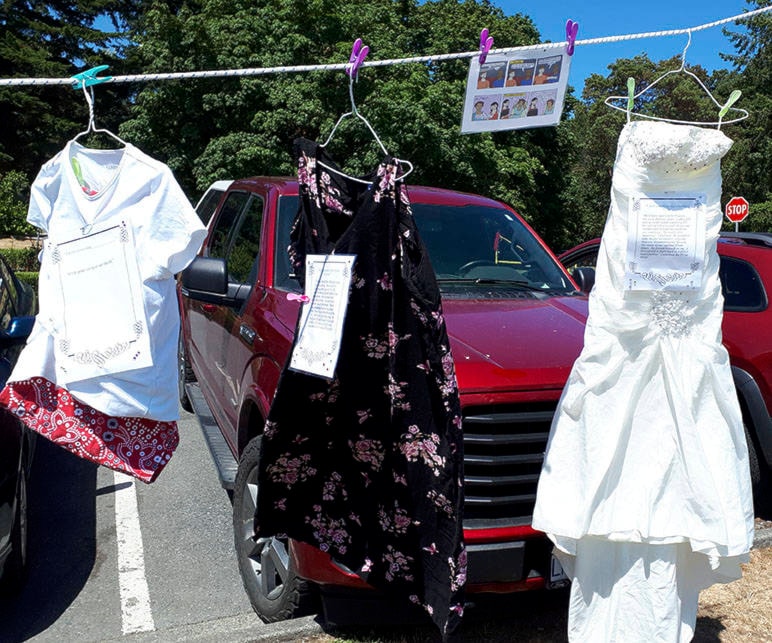“What Were You Wearing?”
In response to sexualized violence in the Cowichan Valley, Warmland Women’s Support Services Society is hosting an art installation, What Were You Wearing? to address victim blaming and rape myths. The “What Were You Wearing?” Survivor Art Installation originated at the University of Arkansas in 2013. Created by Jen Brockman and and Dr. Mary Wyandt-Hiebert, the project was inspired by Dr. Mary Simmerling’s poem, “What I Was Wearing.”
Our society tends to default to the question, ‘Well, if she was raped, what was she wearing?’ implying that survivors of sexualized violence are responsible for anticipating, causing, or stopping the violence. The next series of questions usually are, ‘Why was she drinking? Why was she on that trail after dark? Why did she go to that party with those guys?’ This is victim blaming.
As long as we are asking questions about what the survivor was and wasn’t doing we are erasing the presence of the offender. The questions we should be asking? “Why did he rape her?” “Why did he stalk her?” “Why did he drug her drink?”
Victim blaming obscures the actions an offender takes to plan for and overcome the victim’s resistance and tells potential victims, especially women, that it is their responsibility to make sure they are not assaulted. From date-rape drug-detecting nail polish to difficult-to-remove underwear, the message is clear: women should be trying harder not to get raped.
Why do we victim blame? Sometimes it’s a psychological safety strategy. Holding victims responsible for their misfortune is partially a way to avoid admitting that something just as unthinkable could happen to us — even if we do everything “right”. We know with certainty that as long as we exclude the offender from the conversation we are creating barriers for the offender to seek help. We know that hurt people hurt people.
Rape is a violent physical assault that is sexualized. Sexual assault is about power and control, not sexual attraction. It is never the victim’s fault, and it is never about ‘what they were wearing’.
The art installation will be on display Saturday, Sept. 5 at Charles Hoey Park from 10 a.m.-2 p.m. and will be well marked to regard social distancing when viewing the display. Warmland Women’s Support Services invites community members to learn about affirmative consent, address rape myths and become more than a bystander to sexualized violence. Survivors are invited to submit their own stories ahead of time.
Kendra Thomas is the program coordinator at the Warmland Women’s Support Services Society. She can be contacted at kthomas@warmlandwomen.org or on Facebook at warmlandwomen

